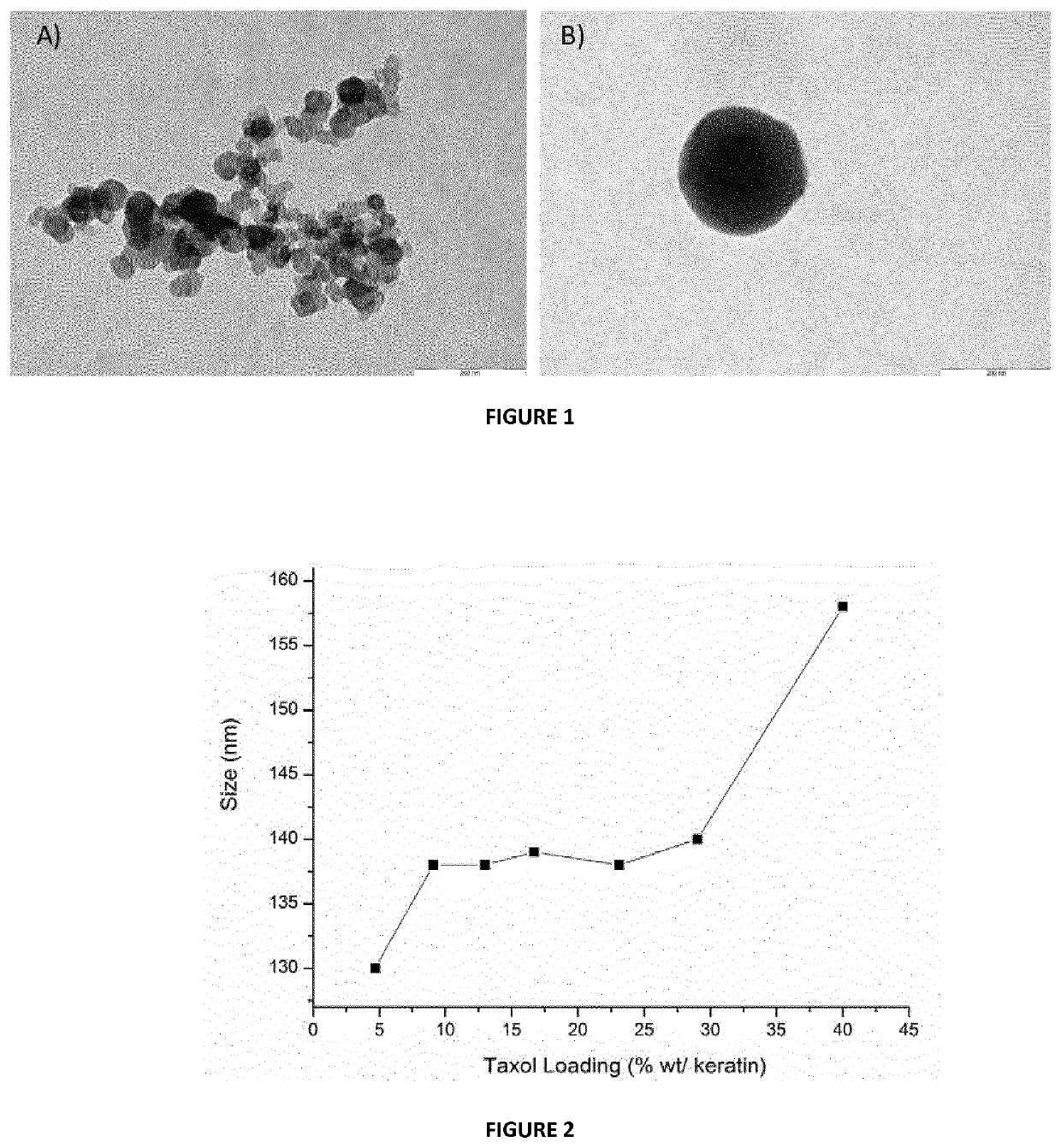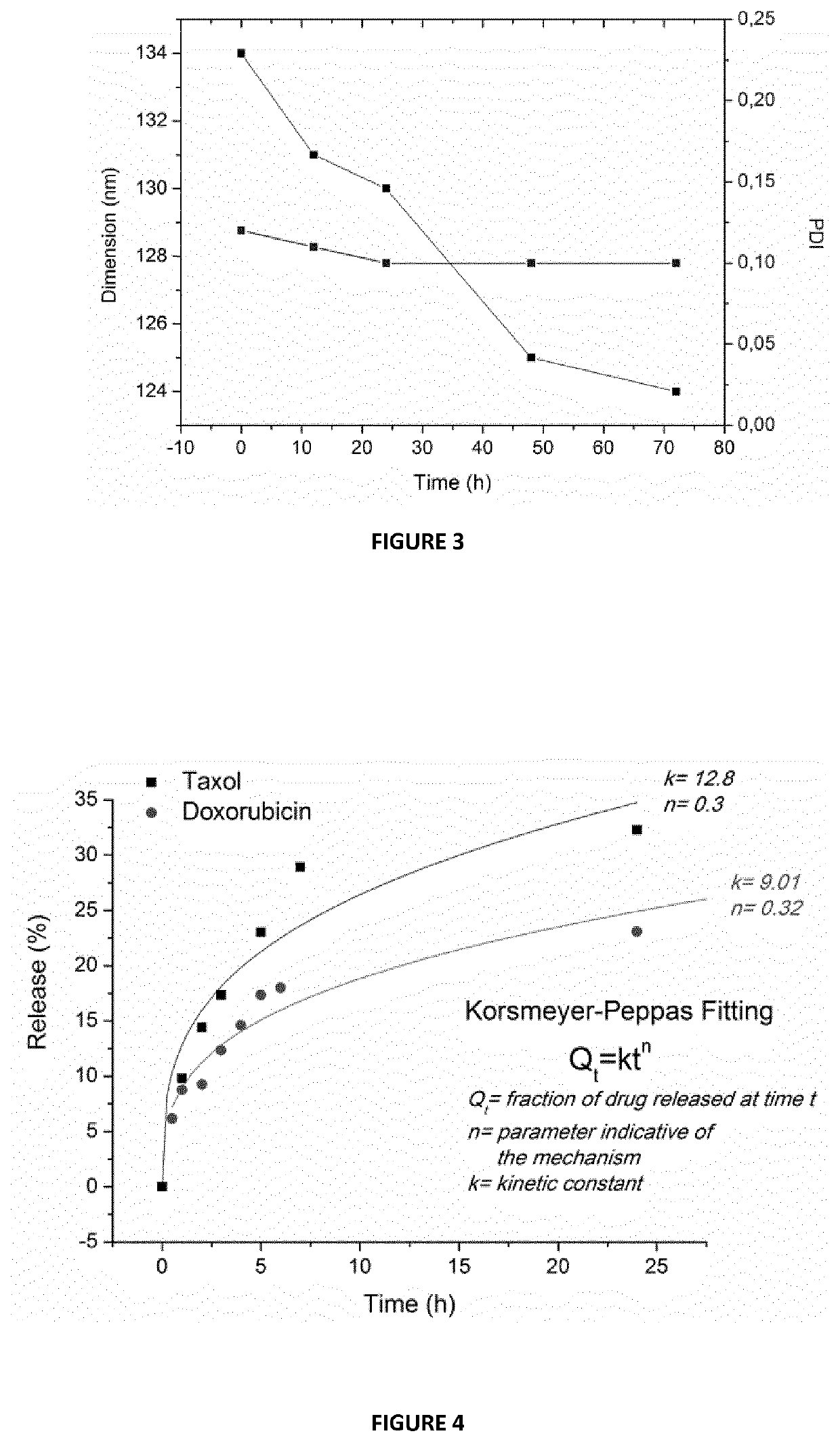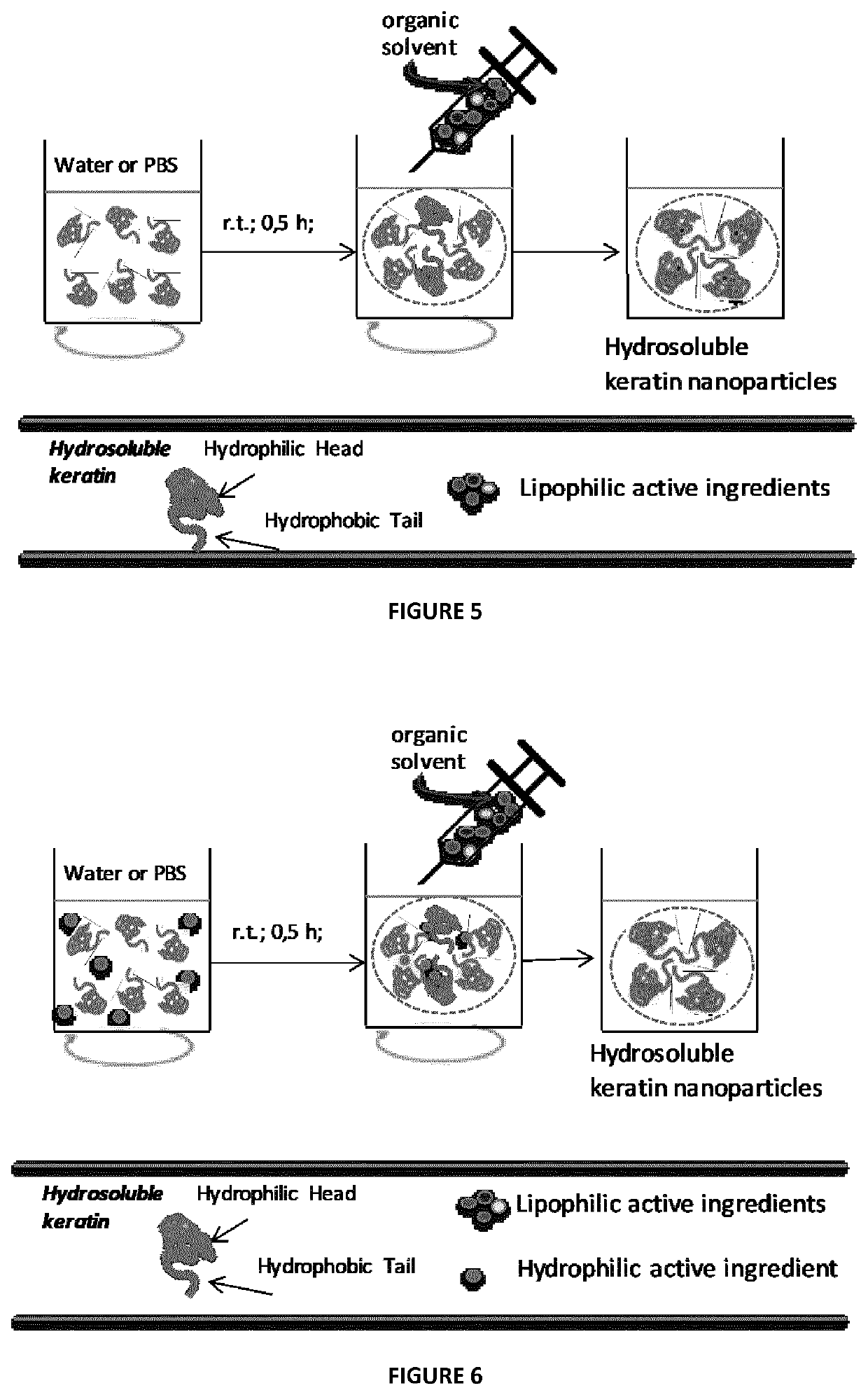Nanoparticles as delivery vehicles of active ingredients and methods for the production thereof
a technology of nanoparticles and active ingredients, applied in the direction of organic active ingredients, food science, cosmetics, etc., can solve the problems of easy damage to the cross-linker, poor stability of nanoparticles production under aqueous environments, and the toxicity of remaining cross-linkers, so as to achieve quantitative active ingredient loading
- Summary
- Abstract
- Description
- Claims
- Application Information
AI Technical Summary
Benefits of technology
Problems solved by technology
Method used
Image
Examples
example 1
[0126]Materials and Methods. Raw wool was kindly donated from Cariaggi Fine Yarns, S.p.A. Keratin was extracted from raw wool by sulphitolysis reaction. Briefly, a fiber sample, withdrawn from a combed sliver and cleaned by Soxhlet extraction with petroleum ether, was washed with distilled water and dried at 21° C. and 60% relative humidity overnight. Afterward, cleaned fibers (5 g) were cut into snippets and dispersed in 100 mL of aqueous solution containing urea (8 M), sodium metabisulphite (0.5 M) and sodium dodecyl sulfate (SDS, 0.1 M), under mechanical shaking at 65° C. overnight. The mixture was filtered with a vacuum filter (10-16 μm cut-off), dialyzed against distilled water using a cellulose tube (molecular weight cut-off 12-14 kDa) for 3 days at room temperature, changing the distilled water four times a day. The resulting aqueous solution was freeze-dried in order to obtain pristine keratin powder.
[0127]General Method for the Preparation of Nanoparticles Through Aggregati...
example 2
on of Keratin Nanoparticles Loaded with Taxol Via Aggregation (KNPs-PTX)
[0133]This example describes the process by which keratin nanoparticles loaded with taxol can be obtained. Keratin, was dissolved in mQ water or PBS at a concentration of 1.5 mg / mL and filtered using a 450 nm filter cut-off. Different amounts of taxol dissolved in ethanol (10 mg / mL) were added to the keratin solution, under stirring at 730 rpm. Taxol induces the aggregation of keratin into nanoparticles (KNPs-PTX), whose dimensions and polydispersity index depend on taxol loading. In particular, it was found that low drug concentration (5% wt) yielded particles having a mean diameter of about 110 nm; while, with increasing the drug amount from 10 to 30% wt, the nanoparticles dimensions increase to 138 nm. By using a taxol amount of 40% wt nanoparticles having a mean diameter of 158 nm were obtained (FIG. 2). Real-time fluorescence spectroscopy was used to monitor the loading / interaction between PTX and keratin. ...
example 3
on of Keratin Nanoparticles Loaded with Doxorubicin Via Aggregation (KNPs-Doxorubicin)
[0134]This example describes the process by which keratin nanoparticles loaded with doxorubicin can be obtained. Keratin is dissolved in carbonate buffer (pH 9) at a concentration of 4 mg / mL and filtered using a 450 nm filter cut-off. Different amounts of doxorubicin dissolved in water (1 mg / mL) were added to the keratin solution, under stirring at 730 rpm. In particular, the amount of added doxorubicin, with respect to keratin was of 15% and 30% wt. In basic environment, the hydrophobic doxorubicin induces the keratin aggregation into nanoparticles, involving the hydrophobic part of the protein. The particles dimensions depend on the doxorubicin loading. It was found that nanoparticles of about 80 and 100 nm were obtained with a doxorubicin loading of 15 and 20% wt, respectively.
PUM
| Property | Measurement | Unit |
|---|---|---|
| molecular weight | aaaaa | aaaaa |
| diameter | aaaaa | aaaaa |
| diameter | aaaaa | aaaaa |
Abstract
Description
Claims
Application Information
 Login to View More
Login to View More - R&D
- Intellectual Property
- Life Sciences
- Materials
- Tech Scout
- Unparalleled Data Quality
- Higher Quality Content
- 60% Fewer Hallucinations
Browse by: Latest US Patents, China's latest patents, Technical Efficacy Thesaurus, Application Domain, Technology Topic, Popular Technical Reports.
© 2025 PatSnap. All rights reserved.Legal|Privacy policy|Modern Slavery Act Transparency Statement|Sitemap|About US| Contact US: help@patsnap.com



